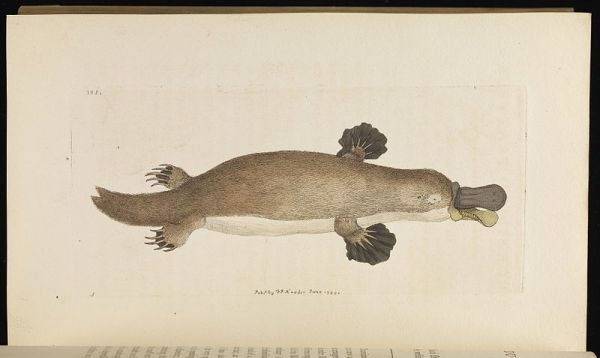
The platypus was just made-up, like unicorns and dragons, right? Natalie Zarrelli writes at Atlas Obscura:
In his laboratory study in 1799, biologist George Shaw stared down at his new specimen in disbelief. The creature from the colony of New South Wales came preserved in pungent alcohol, and he carefully snipped the thick, brown pelt around the creature’s beak, sure he would soon reveal the stitches where an expert taxidermist had fused the bird and beast together. It was like nothing he had seen before: the creature had the body of a furry brown cat, four short legs and sharp claws over webbed feet; the tail of a beaver, but the beak of a duck.
Shaw had met his first platypus, and did not for a moment believe it was possibly real. Despite the preserved specimens returning from Australia, many scientists continued to believe that the platypus was a hoax. Some suspected that it was an accident of nature brought about by breeding between species. It would be a century before they definitely confirmed that the platypus was indeed real and, in fact, a mammal:
In the late 1800s, Scottish zoologist William Hay Caldwell finally managed to dissect fresh platypus eggs and confirmed once and for all that the animal did in fact lay them, though the embryos partially developed inside the platypus’s body, which also nursed its young. The platypus was classified as a mammal—one of five that are known to lay eggs, in the order Monotremata.

No comments:
Post a Comment